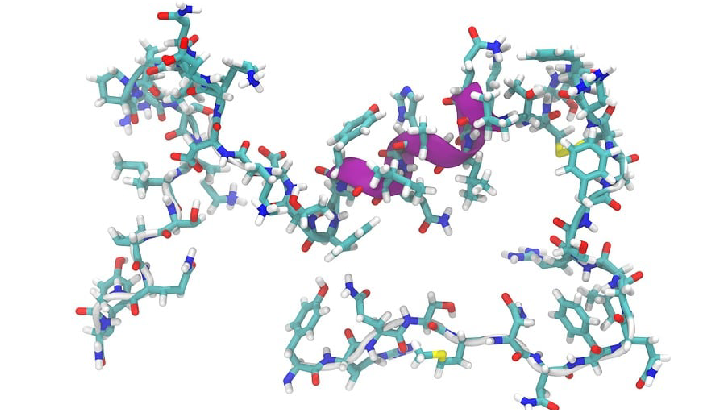Metabolic conditioning (MetCon) has gained significant attention in the fitness world, often hailed as a powerful approach to improving fitness levels, burning fat, and enhancing overall athletic performance. But what exactly is metabolic conditioning, and how can you incorporate it into your training routine to achieve your fitness goals? This article will explain to you the concept of metabolic conditioning, its benefits, and how you can design a MetCon program that works for you.
Understanding Metabolic Conditioning
Metabolic conditioning refers to a form of high-intensity exercise that aims to maximize the efficiency of the body’s energy systems. The goal is to condition your metabolism to work harder and faster, both during and after exercise, resulting in improved energy use, increased calorie burn, and enhanced endurance.
Our bodies rely on three primary energy systems to fuel activity:
- Phosphagen (ATP-PC) system: This is the quickest way to produce energy and is used for short bursts of high-intensity activities, such as sprinting or heavy lifting. It lasts about 10-15 seconds.
- Glycolytic (anaerobic) system: This system kicks in during moderate to high-intensity activities that last from 30 seconds to about two minutes. It uses stored glucose for energy.
- Oxidative (aerobic) system: This is the slowest energy system and is used for sustained activities lasting longer than two minutes, such as long-distance running or cycling.
Metabolic conditioning targets all three energy systems by combining various exercises that stress the body at different intensities and durations. The result is a well-rounded workout that trains your body to use energy more efficiently, improves endurance, and increases strength.
Benefits of Metabolic Conditioning
MetCon is widely used by athletes, fitness enthusiasts, and those looking to improve their body composition for several reasons:
- Increased Calorie Burn: MetCon workouts are designed to push your body to its limits, resulting in an increased caloric expenditure both during and after exercise. This is known as excess post-exercise oxygen consumption (EPOC), or the “afterburn effect.” The more intense the workout, the more oxygen your body requires to recover, leading to more calories burned even after you’ve finished exercising.
- Improved Cardiovascular Health: By incorporating short, intense bursts of exercise followed by brief rest periods, MetCon workouts challenge your cardiovascular system and improve your heart and lung capacity over time.
- Enhanced Muscle Endurance and Strength: Metabolic conditioning workouts typically involve full-body movements that engage multiple muscle groups at once. This helps build muscle endurance, strength, and coordination, making you stronger and more resilient during physical activities.
- Time Efficiency: One of the key benefits of MetCon is that it packs a significant amount of work into a short period. A typical MetCon session can last anywhere from 10 to 30 minutes, making it ideal for those with busy schedules who still want an effective workout.
- Variety and Adaptability: Metabolic conditioning workouts can be highly varied and adapted to suit different fitness levels and goals. Whether you’re a beginner or a seasoned athlete, you can tailor your workouts to meet your needs, using different exercises, intensities, and equipment.
How to Achieve Metabolic Conditioning
Achieving metabolic conditioning involves a structured approach that balances intensity, exercise selection, and rest periods. Here are some key steps to help you design a MetCon program:
- Determine Your Fitness Goals
Before starting a MetCon program, it’s important to define your fitness goals. Are you aiming to lose fat, build muscle, improve endurance, or enhance overall athletic performance? Knowing your objectives will help you choose the right exercises and intensity for your workouts.- Fat Loss: If your primary goal is fat loss, focus on workouts that involve high-intensity interval training (HIIT) with short rest periods. This approach maximizes calorie burn and fat oxidation.
- Muscle Building: For muscle hypertrophy, use exercises that incorporate weightlifting and strength training, with slightly longer rest periods to allow for muscle recovery.
- Endurance: If endurance is your goal, incorporate longer workout intervals with lower intensity, focusing on sustained effort over time.
- Choose the Right Exercises
A MetCon workout should include compound movements that engage multiple muscle groups and target all three energy systems. Here are some examples of exercises commonly used in MetCon routines:- Bodyweight exercises: Push-ups, pull-ups, burpees, squats, lunges, mountain climbers.
- Weightlifting: Deadlifts, kettlebell swings, dumbbell presses, clean and jerks, snatches.
- Cardiovascular exercises: Sprints, rowing, cycling, jump rope, box jumps.
The key is to combine exercises that challenge different energy systems and work both upper and lower body muscles. For example, a MetCon circuit might include kettlebell swings (anaerobic), burpees (phosphagen), and rowing (aerobic) to train all three energy pathways.
- Set the Right Intensity and Duration
The intensity and duration of your MetCon workout will depend on your fitness level and goals. Beginners might start with shorter intervals of high-intensity work (20-30 seconds) followed by longer rest periods (60-90 seconds). As you progress, you can reduce the rest time and increase the intensity of your efforts.
A popular format for MetCon workouts is Tabata training, which consists of 20 seconds of intense work followed by 10 seconds of rest, repeated for 4 minutes. Other formats include AMRAP (As Many Rounds As Possible), where you complete as many rounds of a given set of exercises as possible within a certain time frame, or EMOM (Every Minute on the Minute), where you perform a set number of reps for an exercise at the start of each minute. - Manage Rest Periods
One of the hallmarks of MetCon workouts is the careful management of rest periods. Short rest intervals (10-30 seconds) help keep the intensity high, but you must balance this with your ability to recover and perform at your best. Over time, as your fitness improves, you’ll be able to reduce your rest periods and still maintain high performance during each exercise. - Monitor Your Progress
As with any training program, it’s important to track your progress. Keep a record of the exercises you perform, the number of rounds or repetitions completed, and the rest times used. Monitoring your progress allows you to adjust your workouts as needed, increasing the intensity or duration to continue challenging your body.
Sample Metabolic Conditioning Workout
Here’s a sample 20-minute MetCon workout that targets the entire body and uses all three energy systems:
- Kettlebell Swings (45 seconds of work, 15 seconds rest)
- Burpees (45 seconds of work, 15 seconds rest)
- Rowing or Sprinting (45 seconds of work, 15 seconds rest)
- Push-Ups (45 seconds of work, 15 seconds rest)
- Rest 1 minute and repeat the circuit 3 times.
Final Thoughts
Metabolic conditioning is a highly effective training method for anyone looking to improve their fitness, burn fat, and build muscle in a time-efficient way. By focusing on high-intensity exercises that challenge all three energy systems, you can maximize your workout benefits while keeping your sessions short and impactful. Whether you’re a beginner or an experienced athlete, incorporating MetCon into your routine can lead to significant improvements in endurance, strength, and overall fitness.









